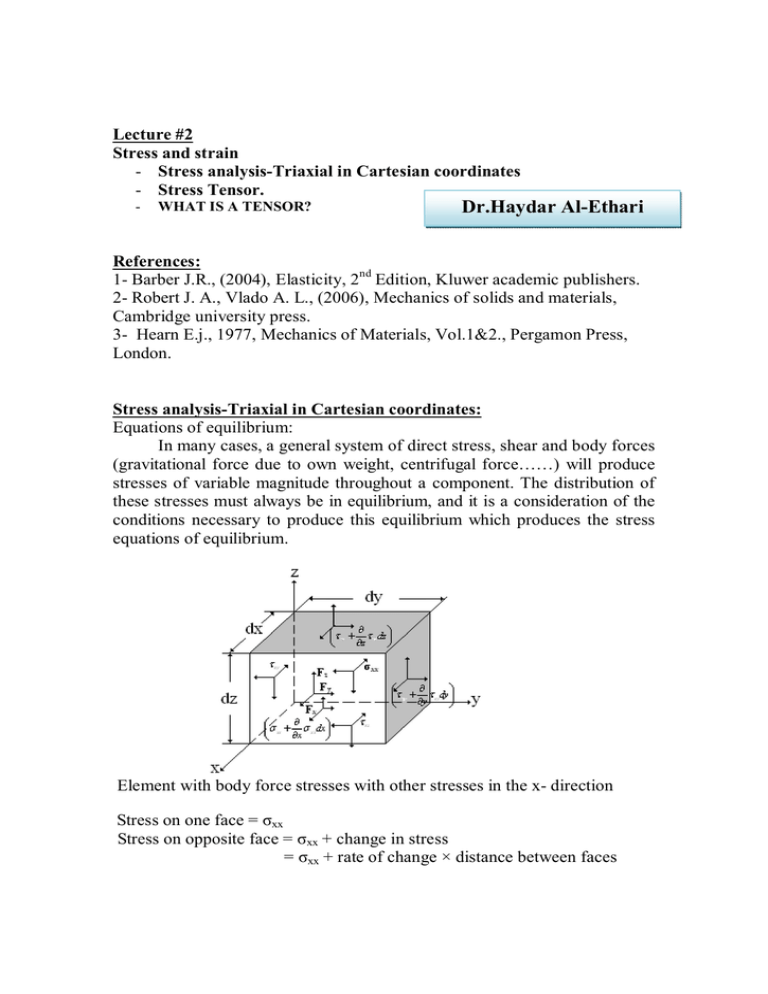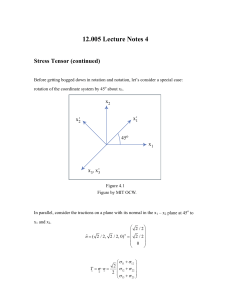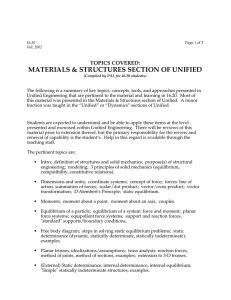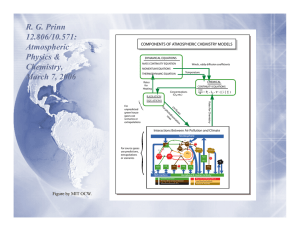Dr.Haydar Al-Ethari
advertisement

Lecture #2 Stress and strain - Stress analysis-Triaxial in Cartesian coordinates - Stress Tensor. - WHAT IS A TENSOR? Dr.Haydar Al-Ethari References: 1- Barber J.R., (2004), Elasticity, 2nd Edition, Kluwer academic publishers. 2- Robert J. A., Vlado A. L., (2006), Mechanics of solids and materials, Cambridge university press. 3- Hearn E.j., 1977, Mechanics of Materials, Vol.1&2., Pergamon Press, London. Stress analysis-Triaxial in Cartesian coordinates: Equations of equilibrium: In many cases, a general system of direct stress, shear and body forces (gravitational force due to own weight, centrifugal force……) will produce stresses of variable magnitude throughout a component. The distribution of these stresses must always be in equilibrium, and it is a consideration of the conditions necessary to produce this equilibrium which produces the stress equations of equilibrium. Element with body force stresses with other stresses in the x- direction Stress on one face = xx Stress on opposite face = = + change in stress xx + rate of change × distance between faces xx Therefore Stress on opposite face = σ xx + ∂σ xx dx ∂x Multiplying by the area dy dz of the face produces the force in X- direction, thus for equilibrium of forces: ∂ ∂ ∂ σ xx + ∂x σ xx dx − σ xx dydz + σ xy + ∂y σ xy dy − σ xy dxdz + σ xz + ∂z σ xz dz − σ xz dxdy + Fx dxdydz = 0 (The body force term being defined as a stress per unit volume is multiplied by the volume dx dy dz to obtain the corresponding force) Dividing by dx dy dz and simplifying, ∂σ xx ∂σ xy ∂σ xz + + + FX = 0 ∂x ∂y ∂z Similarly, for equilibrium in Y and in Z directions: ∂σ YX ∂σ YY ∂σ yz + + + Fy = 0 ∂x ∂y ∂z ∂σ zx ∂σ zy ∂σ yz + + + Fz = 0 ∂x ∂y ∂z The symbol in above equations may be replaced by ; the mixed suffix denotes that it is a shear stress. The moment of forces must also be in equilibrium. Consider the element below which shows only the stresses which produces moments about Y-axis. For convenient and to eliminate some terms the origin of the coordinate has been chosen to coincide with the centroid of the element. dz dz dz dz ∂ ∂ τ xz + ∂z (τ xz ) 2 dxdy 2 + τ xz − ∂z (τ xz ) 2 dxdy 2 − ∂ dx dx dx dx ∂ τ zx + ∂x (τ zx ) 2 dydz 2 − τ zx − ∂x (τ zx ) 2 dydz 2 = 0 Dividing by (dxdydz) and simplifying get that xz = zx . Similarly, by considering the moments about the X&Z axes, zy = yz and xy = yx The nine Cartesian stress components thus reduces to six independent values, σ xx σ xy σ xz σ yx σ yy σ yz σ zx σ zy σ zz ≡ σ xx σ xy σ xz σ yy σ yz σ zz Stress Tensor The state of stress at a point can be defined in terms of six stresses: σ xx σ xy σ xz i = 1,2,3 σ ij = . σ yy σ yz where j = 1,2,3 . . σ zz WHAT IS A TENSOR? Tensor is a group of numbers that represents a physical quantity. Tensors have special properties that make it easy to transform and manipulate physical quantities. The stress tensor is symmetric about its main diagonal.









